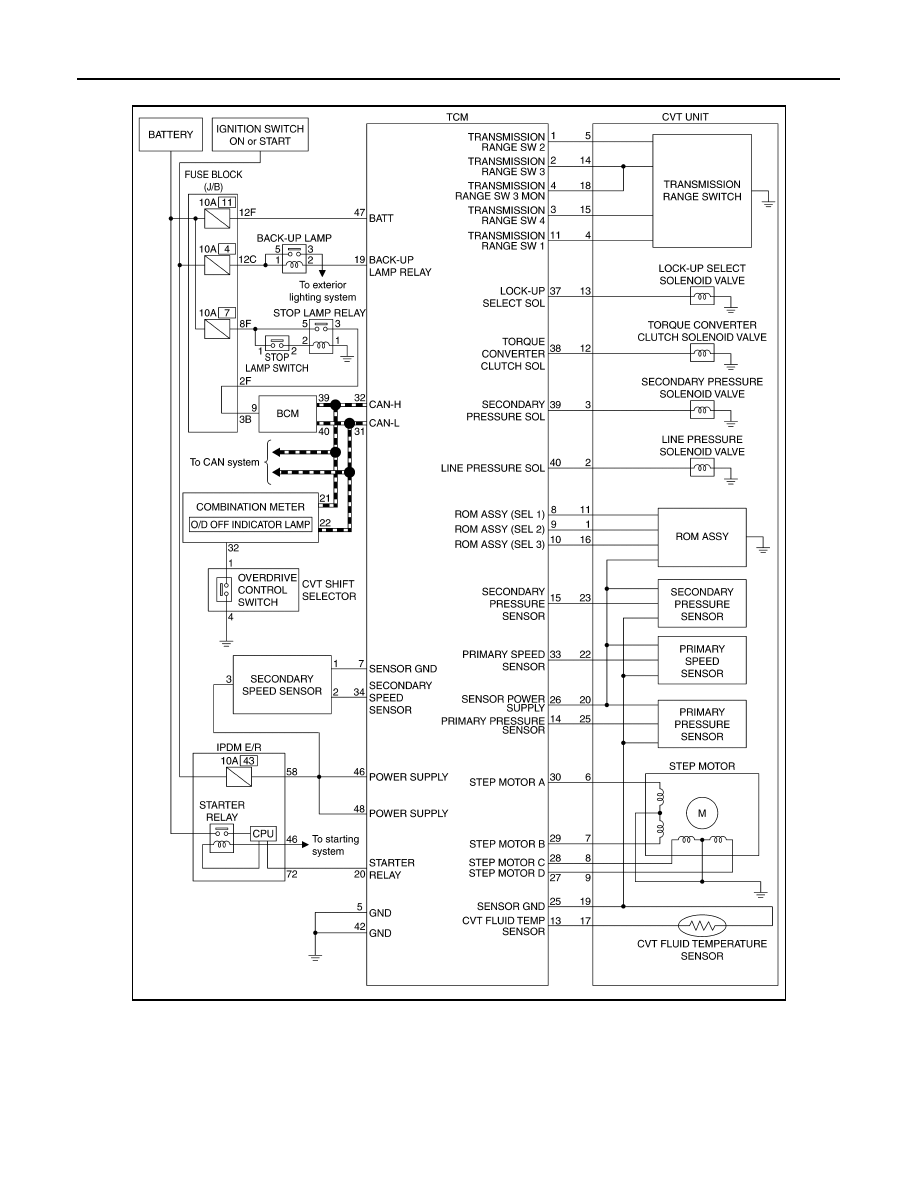Content .. 1197 1198 1199 1200 ..
Nissan Quest E52. Manual - part 1199

TM-26
< SYSTEM DESCRIPTION >
[CVT: RE0F09B]
SYSTEM
CVT CONTROL SYSTEM : Circuit Diagram
INFOID:0000000009650086
CVT CONTROL SYSTEM : Fail-safe
INFOID:0000000009650087
DESCRIPTION
TCM has a fail-safe mode. The mode functions so that operation can be continued even if the signal circuit
ofthe main electronically controlled input/output parts is damaged.
JSDIA5054GB